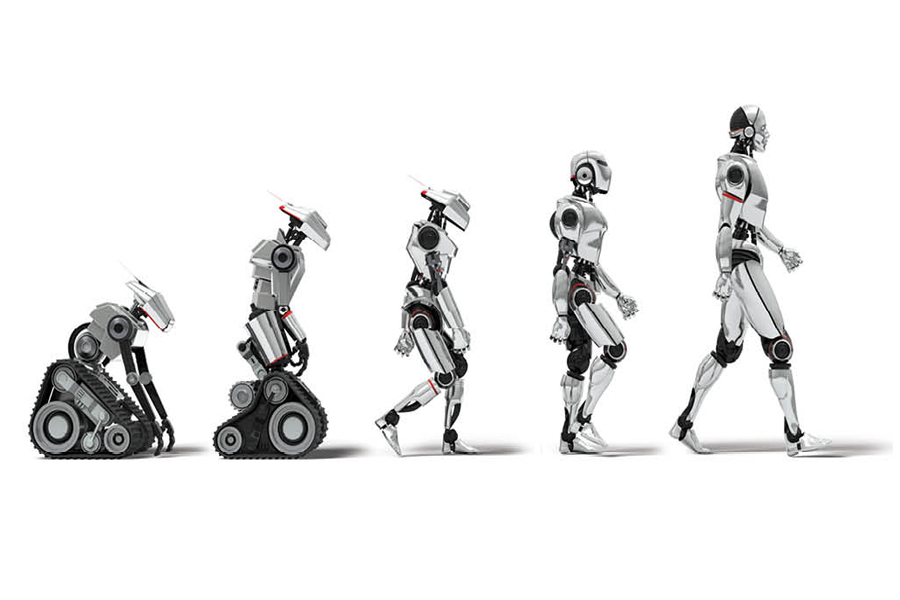The field of robotics has experienced tremendous growth over the past few decades, with advancements in artificial intelligence, machine learning, and robotics engineering. One area that has gained significant attention in recent years is humanoid robot mobility. Humanoid robots are designed to resemble and mimic human movements, allowing them to interact with their environment in a more natural and intuitive way. In this article, we will explore the concept of humanoid robot mobility, its current state, and future directions.

Introduction to Humanoid Robots
Humanoid robots are designed to have a human-like body plan, with a torso, arms, and legs. They are typically equipped with advanced sensors, actuators, and control systems that enable them to perform a wide range of tasks, from simple manipulation to complex locomotion. Humanoid robots are often used in research, education, and industry, where they can be used to develop and test new robotic technologies, teach students about robotics and engineering, and perform tasks that are difficult or dangerous for humans.
Types of Humanoid Robot Mobility
There are several types of humanoid robot mobility, including:
- Bipedal locomotion: This is the most common type of humanoid robot mobility, where the robot walks on two legs. Bipedal locomotion is challenging because it requires the robot to balance and stabilize itself while moving.
- Quadrupedal locomotion: This type of mobility involves the robot walking on four legs. Quadrupedal locomotion is more stable than bipedal locomotion but can be more difficult to control.
- Omni-directional mobility: This type of mobility involves the robot moving in any direction, without being limited to a specific axis.
- Jumping and hopping: Some humanoid robots are designed to jump and hop, allowing them to navigate rough terrain and overcome obstacles.
Challenges in Humanoid Robot Mobility
Despite the advancements in humanoid robot mobility, there are still several challenges that need to be addressed. Some of the key challenges include:
- Balance and stability: Humanoid robots need to balance and stabilize themselves while moving, which can be challenging, especially on uneven or slippery surfaces.
- Locomotion control: Controlling the movement of a humanoid robot is complex, requiring sophisticated algorithms and sensors to detect the environment and adjust the robot’s movement accordingly.
- Obstacle avoidance: Humanoid robots need to be able to avoid obstacles and navigate around them, which requires advanced sensors and control systems.
- Energy efficiency: Humanoid robots require a lot of energy to move, which can limit their operating time and range.
Current State of Humanoid Robot Mobility
Several companies and research institutions are working on developing humanoid robots with advanced mobility capabilities. Some of the notable examples include:
- Boston Dynamics’ Atlas: Atlas is a humanoid robot developed by Boston Dynamics, a leading robotics company. Atlas is designed for search and rescue applications and can walk, run, and jump.
- Honda’s ASIMO: ASIMO is a humanoid robot developed by Honda, a Japanese automaker. ASIMO can walk, run, and climb stairs.
- Sony’s QRIO: QRIO is a humanoid robot developed by Sony, a Japanese electronics company. QRIO can walk, run, and dance.
Future Directions in Humanoid Robot Mobility
The future of humanoid robot mobility is exciting, with several new technologies and applications on the horizon. Some of the potential future directions include:
- Advances in artificial intelligence: Future humanoid robots will be equipped with more advanced artificial intelligence, allowing them to learn and adapt to new situations.
- Improved sensors and actuators: Future humanoid robots will have more advanced sensors and actuators, allowing them to perceive and interact with their environment more effectively.
- Increased use in industry and service: Humanoid robots will be used more widely in industry and service, such as in manufacturing, healthcare, and hospitality.
- Development of new applications: Humanoid robots will be used in new applications, such as search and rescue, disaster response, and environmental monitoring.
FAQ
- What is a humanoid robot?
A humanoid robot is a robot that is designed to resemble and mimic human movements. - What are the types of humanoid robot mobility?
The types of humanoid robot mobility include bipedal locomotion, quadrupedal locomotion, omni-directional mobility, and jumping and hopping. - What are the challenges in humanoid robot mobility?
The challenges in humanoid robot mobility include balance and stability, locomotion control, obstacle avoidance, and energy efficiency. - What are some examples of humanoid robots with advanced mobility capabilities?
Some examples of humanoid robots with advanced mobility capabilities include Boston Dynamics’ Atlas, Honda’s ASIMO, and Sony’s QRIO. - What are the future directions in humanoid robot mobility?
The future directions in humanoid robot mobility include advances in artificial intelligence, improved sensors and actuators, increased use in industry and service, and development of new applications.
Conclusion
Humanoid robot mobility is a rapidly evolving field, with significant advancements in recent years. Despite the challenges, humanoid robots have the potential to revolutionize a wide range of industries and applications, from manufacturing and healthcare to search and rescue and environmental monitoring. As the technology continues to improve, we can expect to see more sophisticated and capable humanoid robots that can interact with their environment in a more natural and intuitive way. With the potential for increased use in industry and service, humanoid robots are likely to become an integral part of our daily lives, transforming the way we work, live, and interact with each other.
Closure
Thus, we hope this article has provided valuable insights into Humanoid Robot Mobility: The Future of Robotics. We hope you find this article informative and beneficial. See you in our next article!
